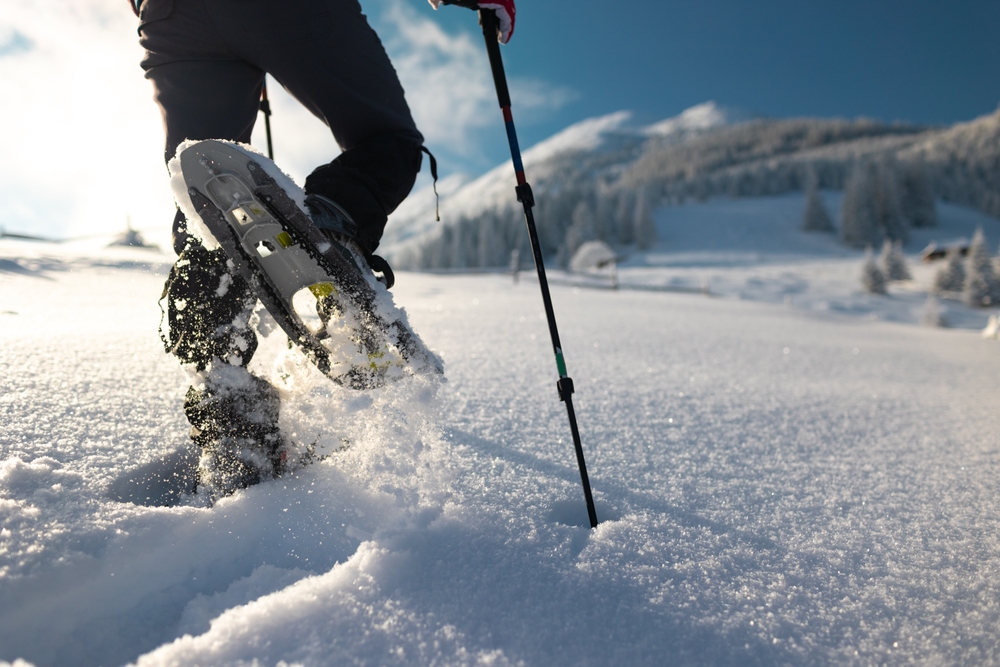Snowshoeing In Glacier Park Area: Are Some Trails Harder Than Others?

Snowshoeing is a winter adventure that opens up a world of snowy landscapes and tranquil wilderness, and Glacier National Park offers some of the most breathtaking settings for this activity. Whether you’re a seasoned snowshoer or a beginner looking to explore, it’s important to understand that not all snowshoeing trails are created equal. In the Glacier Park area, some trails are definitely more challenging than others. This guide will delve into the popular snowshoeing trails in Glacier and help you determine which ones might be more demanding.
The Basics of Snowshoeing
Before we dive into the specifics of snowshoeing trails in Glacier National Park, let’s cover the basics. Snowshoeing is a winter sport where you walk over snow with the aid of specially designed footwear that distributes your weight more evenly. This prevents you from sinking too deeply into the snow and allows you to traverse snowy landscapes more easily.
Why Choose Snowshoeing?
Snowshoeing is an accessible winter sport suitable for people of various fitness levels. It requires minimal gear and provides a fantastic workout while allowing you to enjoy serene winter vistas. In Glacier Park, snowshoeing offers a unique way to experience the park’s stunning winter scenery and wildlife.
Popular Snowshoeing Trails in Glacier
Glacier National Park features several snowshoeing trails, each offering its own unique challenges and rewards. Here’s a look at some of the most popular trails and what you can expect from them.
1. Avalanche Lake Trail
Difficulty: Moderate
Distance: 6 miles round trip
The Avalanche Lake Trail is one of the most popular snowshoeing trails in Glacier. It takes you through a picturesque forested area and up to the stunning Avalanche Lake, which is surrounded by steep cliffs and often features spectacular ice formations in winter. While the trail is moderate in difficulty, the snowshoeing conditions can vary, with some sections being more strenuous due to steeper inclines and uneven terrain.
2. Hidden Lake Overlook
Difficulty: Moderate to Difficult
Distance: 3.3 miles round trip
The Hidden Lake Overlook Trail offers incredible panoramic views of Glacier National Park and is a favorite among snowshoers. The trail begins at the Logan Pass Visitor Center and climbs steadily to an overlook with stunning vistas of Hidden Lake and the surrounding mountains. The ascent can be challenging, especially with snow-covered trails, but the breathtaking views at the top make it worth the effort.
3. St. Mary Falls Trail
Difficulty: Easy to Moderate
Distance: 1.8 miles round trip
For those seeking a less strenuous snowshoeing experience, the St. Mary Falls Trail is a great option. This short trail leads to a beautiful waterfall that can be particularly striking when framed by snow and ice. The relatively gentle terrain makes it accessible for beginners or those looking for a shorter outing. However, be prepared for some icy patches that might require extra caution.
4. Red Rock Falls
Difficulty: Moderate
Distance: 4.2 miles round trip
The Red Rock Falls Trail takes you through the picturesque area of the Many Glacier region. This trail features stunning views of the Red Rock Falls, which can be particularly impressive in winter with snow-covered rocks and icy cascades. The trail is moderate in difficulty, with some uphill sections and potentially challenging snow conditions.
Factors Affecting Trail Difficulty
Understanding the difficulty of snowshoeing trails involves more than just looking at distance and elevation gain. Several factors can influence how challenging a trail may be:
Snow Conditions
The depth and type of snow can greatly impact the difficulty of a trail. Fresh, powdery snow is generally easier to navigate than heavy, packed snow or ice. Always check recent snow conditions before heading out, and be prepared for varying terrain.
Terrain
Trails with steep inclines or uneven terrain can be more challenging. For instance, the Hidden Lake Overlook Trail has a significant elevation gain that can be tough in snowy conditions, while trails like St. Mary Falls offer gentler terrain.
Weather
Weather conditions can change rapidly in Glacier National Park, especially in winter. Visibility issues, high winds, or sudden snowstorms can make trails more difficult. Always check the weather forecast and be prepared for changing conditions.
Experience Level
Your personal experience with snowshoeing plays a crucial role. Beginners may find even moderate trails challenging, while experienced snowshoers might handle them with ease. It’s essential to choose trails that match your skill level and fitness.
Tips for Snowshoeing in Glacier Park
- Wear Appropriate Gear: Ensure you have the right snowshoeing equipment, including snowshoes, poles, and warm, waterproof clothing.
- Check Trail Conditions: Before heading out, check trail conditions and weather forecasts. Park ranger stations or visitor centers can provide up-to-date information.
- Carry Safety Equipment: Bring a map, compass, or GPS device, and consider carrying an avalanche beacon if venturing into areas prone to avalanche risk.
- Know Your Limits: Start with easier trails if you’re new to snowshoeing, and gradually progress to more challenging routes as your skills improve.
Conclusion
Snowshoeing in Glacier National Park offers an incredible way to explore the winter beauty of this stunning region. While some trails are more challenging than others, there is a wide range of options to suit different experience levels and preferences. By understanding the difficulty of popular snowshoeing trails and preparing accordingly, you can ensure a safe and enjoyable winter adventure in Glacier.
